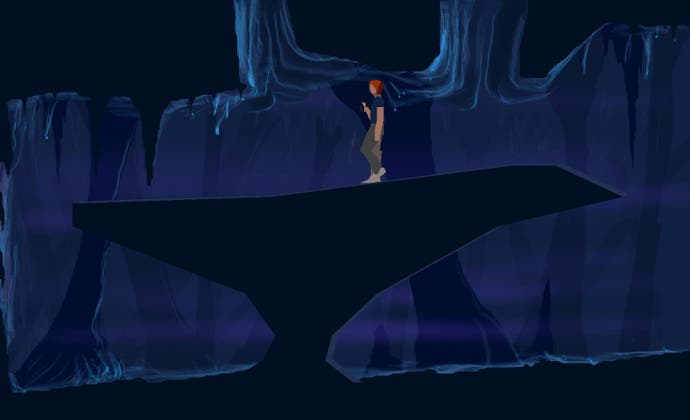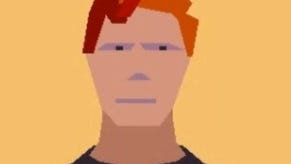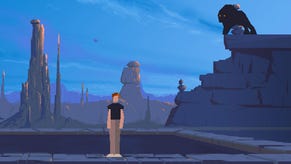Retrospective: Another World 15th Anniversary Edition
It's okay to die.
When developers at Valve make a game, from the moment a single room has been crafted in their Hammer editor, they playtest it. Outsiders come in once a week, with no previous experience of the game, and play with whatever's been created. The developers must watch without comment, and observe how the player encounters the game.
This is not how Another World was developed. Released in 1991, Another World was the one-man project from Eric Chahi, a visually striking 2D platform game about a man transported to an alien world after a disaster with his particle acceleration experiment. (Which oddly enough is the very same premise as Outcast.)
It's minimalist in many senses - you have two action buttons (run and fire on one, jump on the other), and movement. With this, you and a friendly alien must escape an enemy complex, a series of caves, and a tower.
Valve's process is designed to ensure that its games are as intuitive, as user-friendly, as is possible. If someone gets stuck at a certain point, and is unsure where to go next, Valve redesigns that area so that subtle, ambient clues give suggestions to the player almost unconsciously.

The reason you thought to look up and spot a potential route in Half-Life 2: Episode 2? That's because the broken fizzing wires that caught your eye were put there after someone else never thought to look up.
Another World does not provide broken ladders. Possible to finish in under an hour - although it's impossible to do so on your first playthrough - Another World only lasts longer because for the most part you really don't know what to do, nor how to do it.
Mostly your goal is to reach the right side of the screen, but just how or why that can't be done is not flagged up to you. What is blocking your buddy's progress through a tunnel? Why, it's the dangling lampshade five screens away that in no visible way changes anything above it when you shoot it down.
Games have unquestionably changed. From first-person shooters to point-and-click adventures, third-person action to platform, what is understood as "difficulty" has changed. Difficulty is a setting, a lever we pull to decide how many bullets the enemies should be able to absorb, the density of monsters, or the rarity of med packs and ammo. Back then, difficulty was how incredibly bloody hard it was to play something successfully.

Perhaps the most remarkable thing about Another World is that it will quite happily let you charge off in completely the wrong direction to your absolutely certain death, because you hadn't completed a task that would have been found if you'd chosen a different, equally unmarked exit than the one that initially appealed to you. But your death seems to be your fault, so you attempt that route again. And again. And again.
Trial and error could not be more out of fashion. In fact, the necessity of trial and error can now be considered a failing in a game. Were I reviewing an FPS that repeatedly required me to make blind guesses about which of three corridors would render me helpless to an instant death, I would criticise it for this. Dead ends are one thing, death ends are another. We want a game, more than anything, to be fair.
Another World certainly isn't fair. One screen sums this up perfectly. You're in a series of tunnels, but you can only see about a metre either side of your character, the rest of the screen enveloped in darkness. You can roll left or right, dropping into blank spaces. Some of them have spikes at the bottom! So the only way to get through the level is to fail until you don't.
A restart at the top of the screen prevents this from becoming too infuriating, but it very much removes any element of skill from the process. It's a process of elimination.
While that stands as a good, simple example of what I'm discussing, it's not true of the game as a whole. You're still forced to use trial and error, but mostly during long distances across complex screens of tough fights and tricky jumps. Failing means going back to the previous checkpoint and starting the whole process over again.













